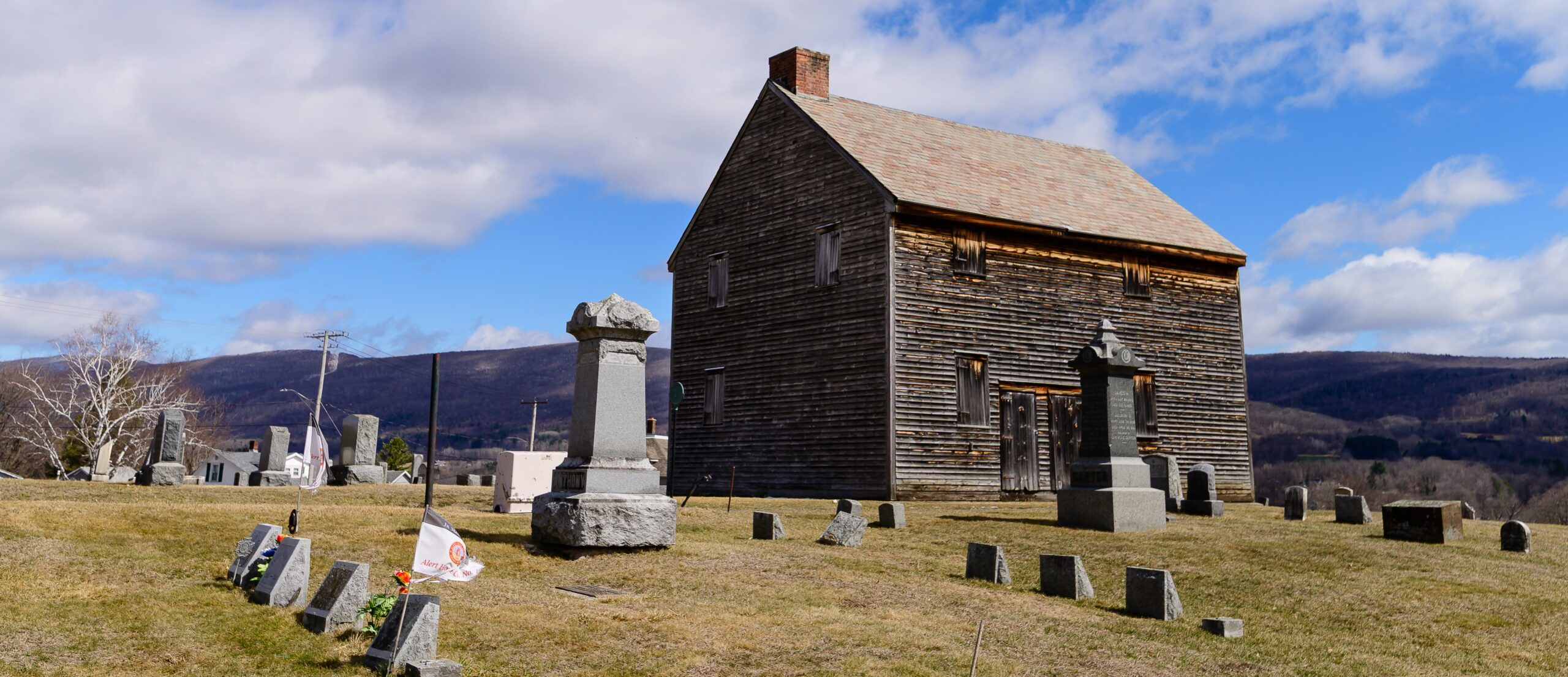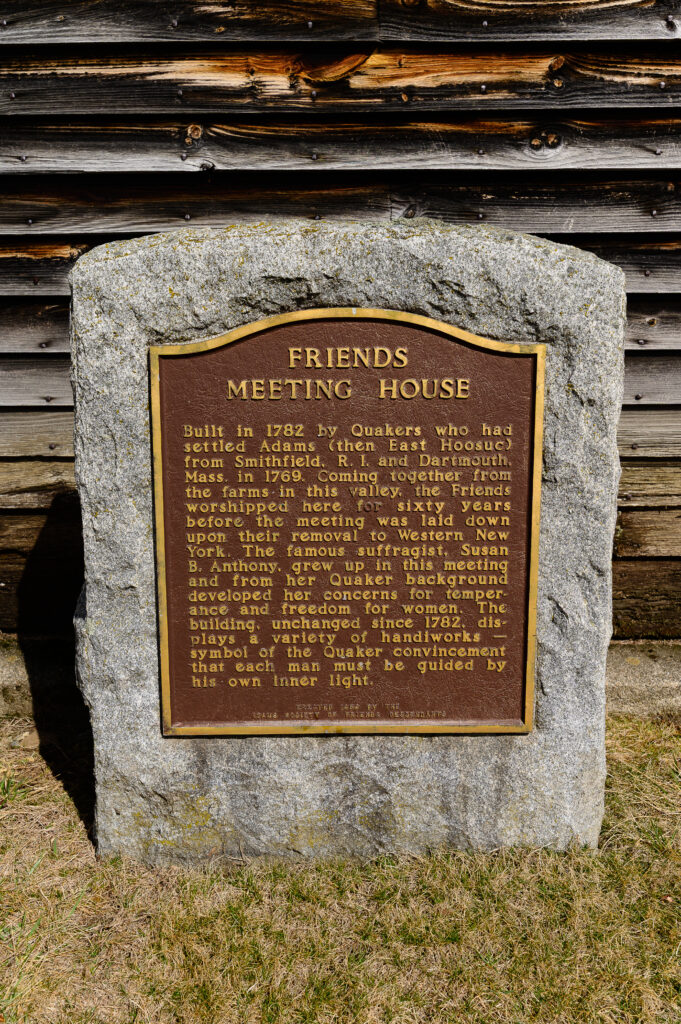
As you walk up Maple Street in Adams, Massachusetts near the top of the street you will note a weathered building off to your right in the middle of an old cemetery. The dark brown clapboard sitting amidst tombstones is a Quaker Meeting House, built by early settlers of Adams hundreds of years ago.
The Quakers, know as Friends, came to America in late 1660s and quickly found out their beliefs conflicted with the Puritan religion and after several moves happily found freedom of worship in western Massachusetts, arriving in Adams around the mid 1700s. These new citizens of East Hoosack (later known as the Town of Adams) form the Society of Friends.
It wasn’t long (1782) before they began constructing a meeting house on five acres of land that had been donated to them. The Friends began using the meeting house in 1783 and for twenty years the Quakers were the only organized religion in Adams.
Their beliefs emphasized a strong commitment to peace, non-violence, and pacifism. They opposed slavery well ahead of most of society and lived a simple life, with few distractions, which they believed helped them better communicate with God.
Their dress was plain and bereft of any fashion. The men wore wide-brim hats with dark clothing and the women bonnets and dresses. This plainness extended to the simple style of their homes and meeting places.
Susan B. Anthony, the renown suffragette, was born in Adams, and as a young child attended services at the meeting house with her family. Her paternal grandparents and other relatives are buried outside in marked graves.
In 1820, Quaker membership peaked at about 40 families. The opening of good farming lands in the western United States spurred relocations and by 1838 only one Quaker family remained. In 1842, the last local meeting was held and the house closed. In 1859, the land was deeded to the town and became part of Maple Street cemetery. The last male Quaker resident died in 1888.

The meeting house itself is perched on the northwestern end of Maple Street cemetery and occupies an elevated position overlooking the cemetery. It was a Quaker place of worship for almost sixty years and is one of the few preserved Quaker meeting houses in the United States.
The house is a simple two story, weathered clapboard building with a chimney on the west side that warms both floors. The structure has two separate entrance doors, one for men and another for women. Its interior is beautiful in its simplicity. Framed plan timbers support the structure and benches and moveable partitions complete the inside. Women sat on the left near the fireplace. Benches were used by all with elevated ones reserved for elders, ministers, and speakers.
There are a few windows on each side. The building has a seating capacity of 300. The second-floor balcony is reached by two stairwells and moveable panels separated men from women.
Today there are 300,000 Quakers worldwide. Kenya has the most Quakers outside of the United States. Two U.S. Presidents were Quaker: Herbert Hoover and Richard Nixon.
The meeting house was placed on National Register of Historic Places in 1976, and Maple Street cemetery was placed on the list in 2004.
Photo Credits: Dan Morgan Photography